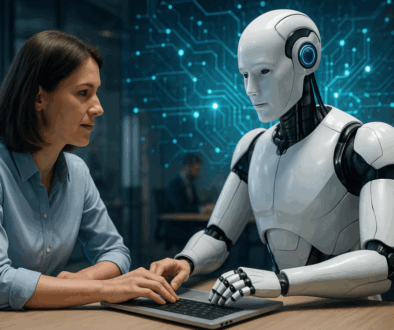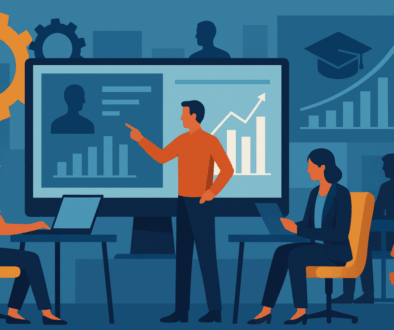Workforce Planning in the AI Era (Part I)
Edition 24-001| 25-April-2024
We begin our inaugural Newsletter with the first of a two-part series outlining key considerations for organizations exploring opportunities to integrate AI in their workforce planning process.
As organizations navigate the transformative impact of artificial intelligence (AI), retooling workforce planning for the AI age has become a critical strategic imperative. In the AI era, successful workforce planning must go beyond traditional headcount forecasting and embrace a more holistic, future-focused approach.
This installment briefly touches on three major areas organizations should focus on artificial intelligence for workforce planning.
Integrating AI into Workforce Planning
AI can be a powerful ally in workforce planning, enabling data-driven decision-making and predictive insights. By leveraging AI-powered analytics, organizations can more efficiently and accurately forecast future talent needs, identify skills gaps, and optimize workforce deployment. However, the integration of AI must be done thoughtfully, with a focus on transparency and ethical considerations. The following are key considerations:
⦁ Alignment with business strategy: AI-powered workforce planning should be closely integrated with the organization’s overall business strategy and objectives to ensure the right talent is in place to support growth and innovation.
⦁ Change management and human-AI collaboration: Integrating AI into workforce planning requires careful change management to address concerns around bias, privacy, and the human-AI dynamic. Organizations must ensure effective collaboration between AI systems and human decision-makers.
⦁ Transparency: Employees need to understand how AI systems make decisions in order to build trust. Companies should invest in explainable AI techniques that provide clear justifications for AI-driven decisions, such as visualization tools and interpretable machine learning models. Ongoing education on AI capabilities and limitations is also crucial.
⦁ Ethical Decision-Making: Maintaining human oversight and accountability is critical to ensure fairness and ethical outcomes from AI systems. Companies should establish frameworks that balance the efficiency of AI-driven decisions with the need for human judgment and accountability.
⦁ Bias Mitigation: AI models can perpetuate historical biases present in training data. Organizations must carefully audit AI-powered hiring tools to identify and mitigate biases against underrepresented groups. Transparency around the data and algorithms used is key.
⦁ Compliance: New regulations are emerging that require audits of AI-powered HR technologies. Companies must ensure their AI tools are compliant, with a focus on data privacy, consent, and the ability to explain AI-driven decisions.
Change Management for Human-AI Collaboration
Integrating AI into workforce planning requires careful organizational change management to address concerns around bias, privacy, and the human-AI dynamic. Organizations must ensure effective collaboration between AI systems and human decision-makers. In doing so, organizations should consider the following key factors:
⦁ Organizational Readiness: Successful AI integration requires the right technological infrastructure, skills, and organizational culture. Leaders must assess the organization’s readiness and make necessary investments in technology, talent, along with a robust change management program to support the transition.
⦁ Process & People Changes: The workforce planning process itself will evolve as AI is integrated. AI can streamline and accelerate certain process steps, allowing organizations to analyze more workforce segments, and freeing up time for more strategic work performed by workforce professionals. However, practitioners must possess the right skill sets to be able to critically evaluate the AI outputs and maintain oversight of the process. Thus, leaders should focus on developing critical thinking, empathy, and curiosity in the knowledge base, as AI will automate many analytical tasks. Upskilling, or reskilling, as a part of organizational change management efforts, is crucial to ensure the workforce planning team can effectively leverage AI and collaborate with the technology.
⦁ Communication and Engagement: Additionally proactive and transparent communication with the broader workforce is essential. Employees may have concerns about AI replacing jobs, so it’s important to emphasize that AI is meant to augment and support them, not replace them. Involving employees in the AI integration process can help build trust and acceptance.
Investing in Upskilling for the AI-Powered Workforce
Investing in upskilling the workforce is crucial to address digital transformation challenges. It is essential that employees are equipped with the necessary skills to leverage these technologies effectively and ethically. Leaders must not take lightly the investments necessary to facilitate the organization’s ability to upskill and reskill.
Some key considerations include:
⦁ Developing a clear strategy and roadmap for AI adoption: Organizations need to have a well-defined plan that outlines their AI goals, the required skills, and the steps to upskill the workforce accordingly.
⦁ Fostering a culture of innovation and agility: Encouraging employees to embrace new technologies and ways of working is critical. This involves providing training, support, and incentives to actively participate in the transformation.
⦁ Assessing current capabilities and identifying skill gaps: Organizations should evaluate their existing workforce skills and determine the areas that need to be strengthened to support AI implementation.
⦁ Partnering with external experts and service providers: Collaborating with AI specialists and technology providers can help organizations access the necessary skills and knowledge to upskill their workforce.
⦁ Implementing AI-focused training and development programs: Offering comprehensive training on AI tools, algorithms, and applications can help employees gain the required competencies to work effectively in an AI-powered environment.
⦁ Promoting transparency and explainability in AI: As AI becomes more integrated into business processes, it is important to ensure that employees understand how these systems work and can interpret their outputs.
⦁ Empowering employees to work alongside AI: Rather than viewing AI as a replacement for human labor, organizations should focus on how these technologies can augment and enhance employee capabilities.
In summary, integrating AI into workforce planning requires a thoughtful, transparent, and ethical approach to build trust with employees and ensure fair, unbiased, and compliant outcomes. In the AI era, workforce planning is no longer a static, reactive process. It has evolved into a dynamic, forward-looking discipline that requires a deep understanding of emerging technologies, a commitment to upskilling, and a holistic view of the workforce ecosystem. By embracing these principles, organizations can build a future-ready workforce that thrives in the age of AI.




